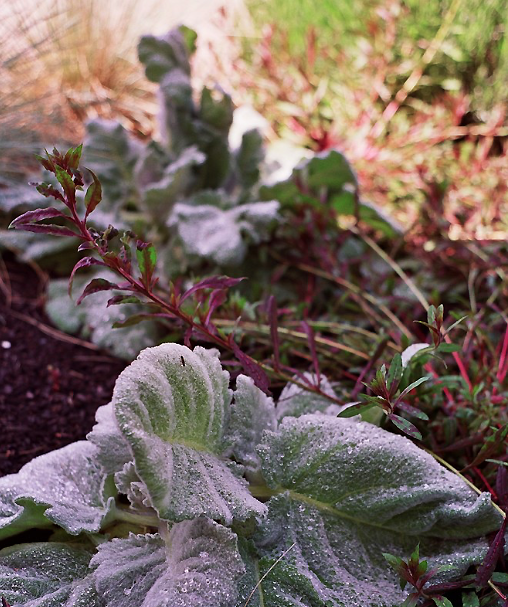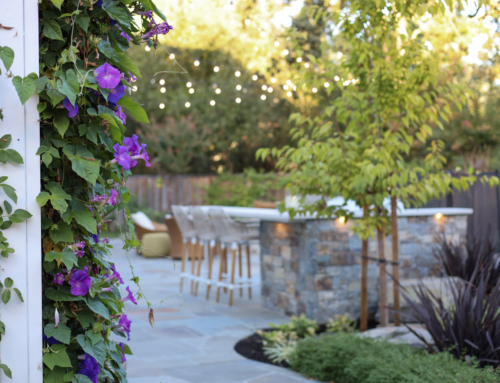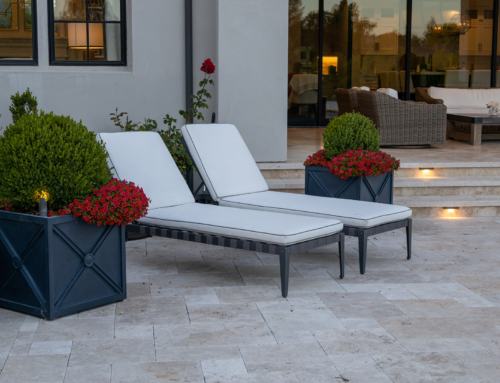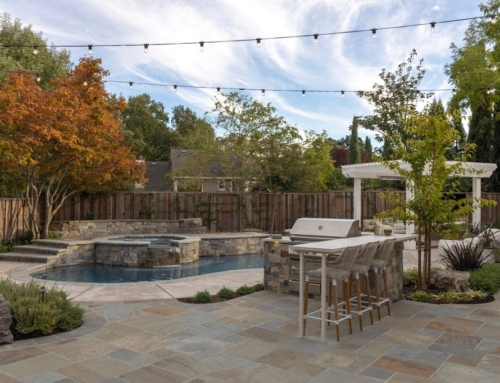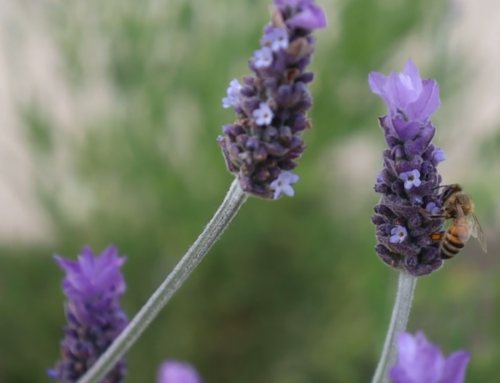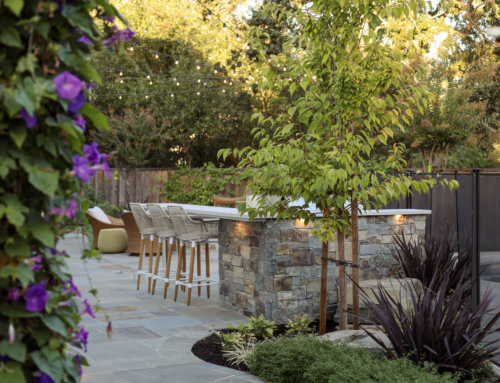Fall Garden Close-Up: Seeds, Roots, & Bulbs
This time of year, it may seem like things are drawing to a close in the garden. You’ve already harvested vegetables and fruits, and many of the flowers are giving one last show before it gets cold. So what else could possibly need to get done? Depending on your landscape and your gardening style, it may in fact be time to relax until next year, or it may be time to get busy preparing your landscape for next Spring! For those of us who have a hard time taking a break, here are some seasonal tasks (that we enjoy more than raking) to be done this time of year.
Seed Saving
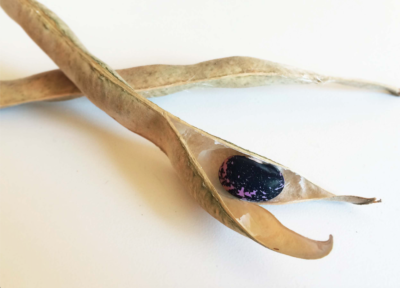
If you love to grow vegetables, herbs, annual flowers, or wildflowers, this is the perfect time to collect seeds from the spent plants to use next year. Allowing even a few of your vegetables to dry or a few seed heads to form on your flowers can provide you with more seeds than you would ever want for Spring! These scarlet runner beans, above, are a perfect example of pods left to dry on the plant. The beans inside will now be perfect for Spring planting.
Now, that being said, not all plants will “come true” from seed. What does this mean? Because so many of the plants in our gardens are hybridized, everything from vegetables to trees has the potential to have some scrambled genetics! If you remember the name Gregor Mendel, the so-called “Father of Genetic Science,” you may remember that his studies showed that seeds from red-flowered peas sometimes yielded white-flowered peas due to their parentage. In the garden, we get the same effect, which can yield anything from whole patches of odd-colored flowers to sour wild plums instead of sweet ones. Not a terrible thing, just not what you expected! What’s more, many plants you will find in the nursery have been so hybridized that they can no longer make functional seeds.

So how do you know if seed-saving is worth it? A packet of store-bought seed should always be marked “Heirloom” if the seeds can be saved for next year. (And, yes! Those flavor-packed, funny-colored heirloom tomatoes at the store can in fact be replanted from their seeds.) If you want to be able to save seeds yearly, make sure to start with a packet like this. In addition, most wildflowers, such as California Poppies and our wild Lupines, Columbines, and Wallflowers, to name a few, will come true from seed, as will some classic garden favorites such as true Oriental Poppies and Sunflowers, and container plants such as Marigolds and Nasturtiums. Placing seeds into packets or jars with a label is always a great idea, so when it comes time to plant next year, you know what the heck they all are!
Root Wrangling
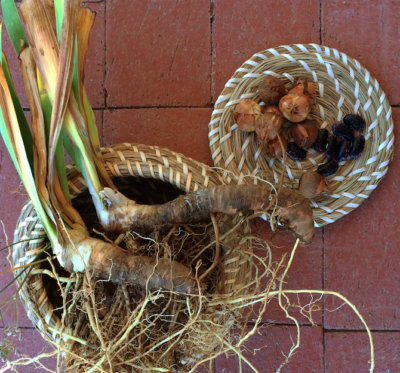
Seeds aren’t the only way of expanding your garden. If you’ve gardened for a while, you know that many plants like their personal space. A congested patch of Daylily or Iris will start to decline and bloom sparsely, which is a sure sign that dividing is needed! Fall is the perfect time of year for dividing these kinds of plants, as well as large Peony or Agapanthus clumps. What a great way to get more plants for your garden, while keeping everyone happy.
For Iris and Daylily: Using a shovel or spade, cut straight down into the patch and unearth a section of roots (OK, in the case of Irises they are rhizomes with roots attached, but you know what we’re saying.) Pull apart individual plants, each with their own root system, and lay them aside, just like these Irises in the image above. Continue breaking up the patch until all plants have been unearthed, then amend the soil if needed and replant each individual with plenty of “elbow room” – 8 inches to 1 foot for Irises and small Daylilies, 18 inches for large Daylilies. When finished, water well. Of course, you will end up with quite the pile of remaining plants! At this time, ask yourself if it’s time to introduce these flowers to other parts of the garden, or time to pawn them off on some grateful gardening friends?
–
For Peonies, Agapanthus, and similar plants: One large clump is best split only once or twice. Cut straight down into the clump with a shovel or spade. Preserving as much root as possible (most important for Peonies, since Agapanthus are indestructible,) lift the new plant out of the bed and set aside for replanting. Fill in around the remaining plant with good soil and water well. Replant the new plant straight into the ground, or into a pot for the time being, and water well.
Bulb Burying
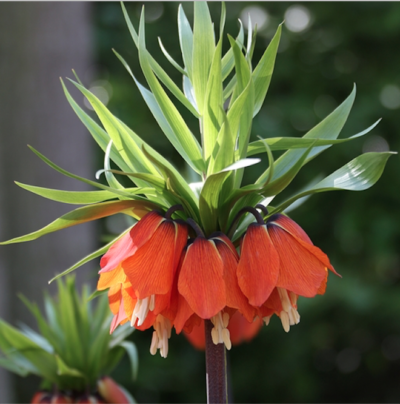
Everyone loves bulbs in the Spring, but it’s often in the Fall that we have to remember to plant them! Narcissus and Tulips are a must, and preparing them now is the key to a perfect Spring bloom. Or go for something a little different, like this stunning Fritillaria above. Cold-climate bulbs can be difficult in areas with mild winters. In fact, in the Bay it is recommended to put your Tulip and Crocus bulbs in the refrigerator for a couple months before planting – just don’t get them confused with your shallots! So, if you buy the bulbs now, and plant them in January, you’ll be set for a great Spring show. For Narcissus and other Mediterranean bulbs, now is the perfect time to plant them in sunny spots around your yard. If you’d like to skip this process next year, search for “naturalizing” bulbs- ones that will not require replanting, though this will limit your selection a bit. Honestly, we find planting bulbs contemplative, even if it’s just a few. It sure is worth it first thing in the Spring! Photo courtesy of Longfield Gardens Bulb Supply.
Here at Montgomery Robbins, we are looking forward to a restful Fall, after we finish all our gardening! That also means we’re taking a break from starting any new landscapes until next season. But it doesn’t mean we don’t want to hear about what you have in mind for your new landscape! Please contact our office and let’s talk possibilities for next year!

